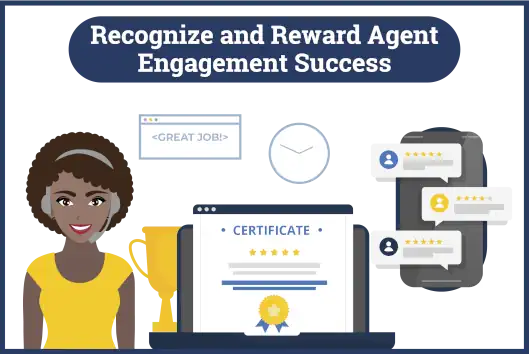When customers reach out to a call center, they’re often in a moment of need or frustration. How agents respond in those moments can shape the customer’s entire perception of the brand.
Engaged interactions create lasting impressions, foster loyalty, and often lead to quicker, more effective resolutions. Disengaged ones can do the opposite—eroding trust and increasing the likelihood of repeat contacts or churn.
Customer engagement is no longer a “nice-to-have.” It’s a strategic necessity. Highly engaged customer experiences are proven to boost satisfaction scores, improve First Call Resolution (FCR), and reduce operational costs through fewer escalations and follow-ups.
At SQM Group, we’ve spent decades helping contact centers enhance customer experience by improving agent performance, leveraging Voice of the Customer (VoC) data, and refining service delivery strategies.
In this blog, we’ll share the top strategies that drive meaningful engagement, with a focus on practical actions call centers can take to deepen relationships and deliver measurable results.
What Does Engagement Mean in a Call Center?
Before improving customer engagement, it’s essential to define what “engagement” actually looks like in the context of a call center. While many organizations focus on metrics like average handle time (AHT) or number of calls answered, true engagement goes deeper. It’s about building meaningful, two-way interactions where customers feel understood, respected, and supported throughout their experience.
In a call center setting, engagement involves more than resolving an issue—it’s how that issue is resolved. Did the agent listen actively? Did they show empathy and ownership? Did the customer feel confident in the outcome? These seemingly small moments of human connection differentiate a transactional interaction from an engaging one.
Customer engagement is also tied closely to emotional satisfaction. SQM Group’s research shows that emotionally engaged customers are far more likely to report high satisfaction, remain loyal to the brand, and have their issue resolved on the first call. In fact, emotional connection is often a stronger predictor of customer loyalty than speed or efficiency alone.
Agents are on the front lines of this experience. Their tone, attitude, and communication style can either build a bridge—or create a barrier. That’s why the foundation of strong engagement starts with a clear understanding: it’s not just about solving problems, it’s about how customers feel during and after that resolution.
Let’s dive into the top strategies to boost customer engagement in your call center.
1. Train Agents in Empathy and Emotional Intelligence
Empathy is at the heart of great customer engagement. It’s not just about saying the right things—it’s about genuinely understanding and validating how the customer feels. When agents are trained to respond with emotional intelligence, they can turn tense or transactional interactions into positive, relationship-building moments.
Empathy helps customers feel heard, respected, and valued. And when customers feel emotionally connected, they’re more likely to trust the agent’s guidance and feel confident in the resolution. This has a direct impact on FCR - a key performance metric that not only improves customer satisfaction but also reduces costs associated with repeat calls.
Training programs that focus on emotional intelligence should go beyond basic soft skills. Agents need tools and practice to recognize emotional cues, manage their own reactions under pressure, and respond with care—even in high-stress scenarios.
Role-playing difficult calls, learning empathetic phrasing (like “I can understand how frustrating that must be” or “Let’s work through this together”), and receiving regular feedback from supervisors all contribute to stronger emotional awareness.
Investing in empathy training isn’t just good for customers—it’s good for agents, too. It leads to more satisfying interactions, higher morale, and lower burnout. When agents feel equipped to connect with people on a human level, engagement naturally improves.
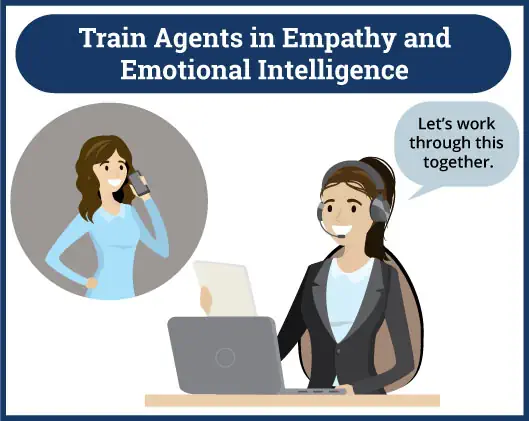
2. Personalize the Customer Experience
A personalized interaction shows customers that they are more than just a ticket number or a voice on the line. It signals that your organization sees and values them as individuals.
Personalization in a call center doesn’t have to be complex. It starts with small but impactful touches:
- Use the customer’s name naturally throughout the conversation.
- Reference their previous interactions or purchases to show continuity and care.
- Offer solutions based on their unique context, not just scripted procedures.
Technology plays an important role here. With integrated CRM systems, agents can access real-time customer information—purchase history, support tickets, and preferences—which allows them to deliver faster, more relevant support. But personalization isn’t just about data; it’s also about tone and intent. Customers can tell when an agent is going through the motions versus genuinely trying to help.
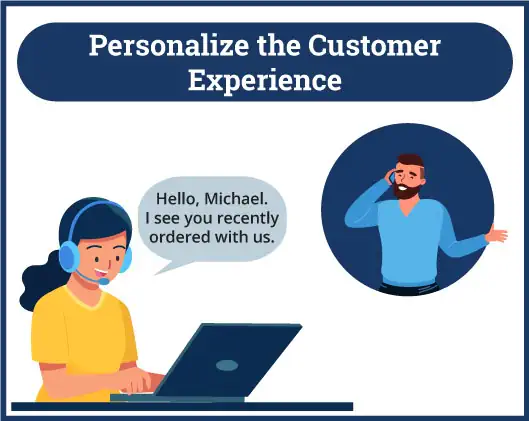
3. Leverage Omnichannel Support to Meet Customers Where They Are
Today’s customers don’t just pick up the phone when they need help—they text, email, chat, and message on social platforms. To keep engagement high, call centers should embrace an omnichannel strategy that allows customers to reach out on their preferred channels while still receiving consistent, high-quality support.
Omnichannel support means more than just offering multiple channels—it’s about creating a seamless experience across them. For example, if a customer starts a conversation via live chat but needs to switch to a phone call, they shouldn’t have to repeat their issue from scratch. Having a unified view of the customer journey ensures continuity, reduces frustration, and improves resolution speed.
Digital channels like chatbots and social messaging can handle simple queries quickly, freeing up agents to focus on more complex or sensitive issues. But even in digital spaces, tone and responsiveness matter. A fast but robotic answer won’t engage the customer the same way a thoughtful, human-centered response will.
By enabling smooth transitions between channels and maintaining consistent service quality, omnichannel support strengthens engagement and builds trust. It also reflects a modern, customer-centric approach—one that acknowledges how people actually seek help today.

4. Empower Agents to Make Decisions
Customer engagement thrives when agents are confident, capable, and trusted to make decisions. Rigid scripts and overly restrictive policies can limit an agent’s ability to connect with customers in a meaningful way. When agents feel they must “stick to the script,” it often leads to robotic interactions that frustrate customers and prevent genuine problem-solving.
Empowering agents means giving them the autonomy to adapt their communication style, offer flexible solutions, and go off-script when necessary to meet the customer’s needs. It also means trusting their judgment in complex or emotionally charged situations.
This level of ownership not only enhances the customer experience but also improves FCR by allowing issues to be resolved in real time—without unnecessary transfers or delays.
Practical ways to empower agents include:
- Providing clear guidelines instead of rigid scripts.
- Training agents on decision-making within company policy.
- Encouraging them to think critically and creatively when addressing unique customer needs.
- Offering real-time support from team leads or supervisors when needed.
Empowered agents are more engaged in their roles, which translates into more engaging conversations with customers. They feel trusted and valued—and that confidence comes through in every interaction.
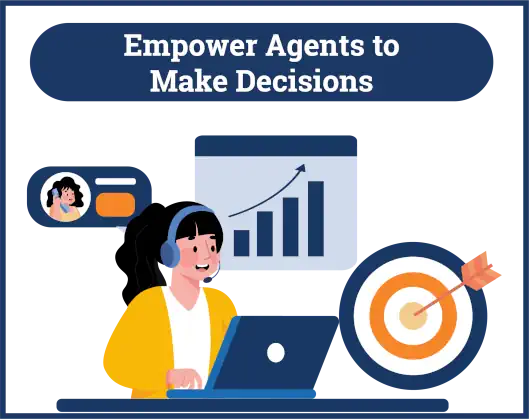
5. Use Customer Feedback to Improve Engagement
One of the most effective (and often underused) ways to boost engagement is to listen to the customer voice—not just during the call, but after it. Post-call surveys, real-time feedback tools, and first call resolution metrics offer valuable insights into how customers perceive your service. But collecting feedback is only the first step; the real value comes from acting on it.
Voice of the Customer (VoC) programs, like those offered by SQM Group, help call centers identify patterns in customer sentiment and highlight engagement gaps at both the individual and organizational levels.
For example, consistent comments about agents sounding rushed or indifferent can signal the need for coaching or staffing adjustments. On the other hand, high praise for agents who go “above and beyond” can inform best practices and training modules.
4.6




 Stars on G2 for mySQM™ Auto QA Tool Reviews
Stars on G2 for mySQM™ Auto QA Tool Reviews












Customer feedback can also spotlight friction points in the customer journey—issues that might not be obvious from internal metrics alone. Are certain policies causing frustration? Are digital channels falling short on responsiveness? VoC data helps answer these questions with clarity and context.
By closing the loop—sharing feedback with agents, recognizing wins, and addressing pain points—you create a culture of continuous improvement. Customers notice when their feedback leads to change, and this responsiveness strengthens engagement and brand loyalty over time.
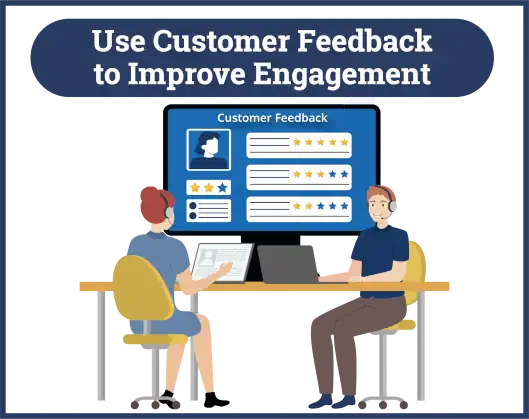
6. Recognize and Reward Agent Engagement Success
Customer engagement doesn’t happen by accident—it’s the result of agents consistently showing up with empathy, skill, and a genuine commitment to helping people. That level of effort deserves to be recognized. When call centers prioritize agent recognition, they not only boost morale but also reinforce the behaviors that drive exceptional customer experiences.
Recognition can take many forms, from formal rewards to informal shout-outs. What matters most is that it's timely, specific, and aligned with customer-centric values. For example, celebrating an agent who resolved a complex issue with empathy and creativity reinforces that those qualities matter just as much as efficiency or call volume.
Ideas for recognizing engagement success include:
- Sharing positive customer feedback in team meetings.
- Creating monthly awards based on VoC or FCR scores.
- Offering spot bonuses or gift cards for standout service.
- Highlighting stories of excellent engagement in internal communications.
Beyond individual rewards, fostering a culture of appreciation makes a real difference. When agents feel valued, they are more likely to stay motivated, engaged, and invested in their work. And when agents are engaged, customers feel it—leading to more meaningful conversations, stronger loyalty, and better business outcomes.
Recognizing great engagement isn’t just a feel-good gesture—it’s a strategic move that pays off across the board.
